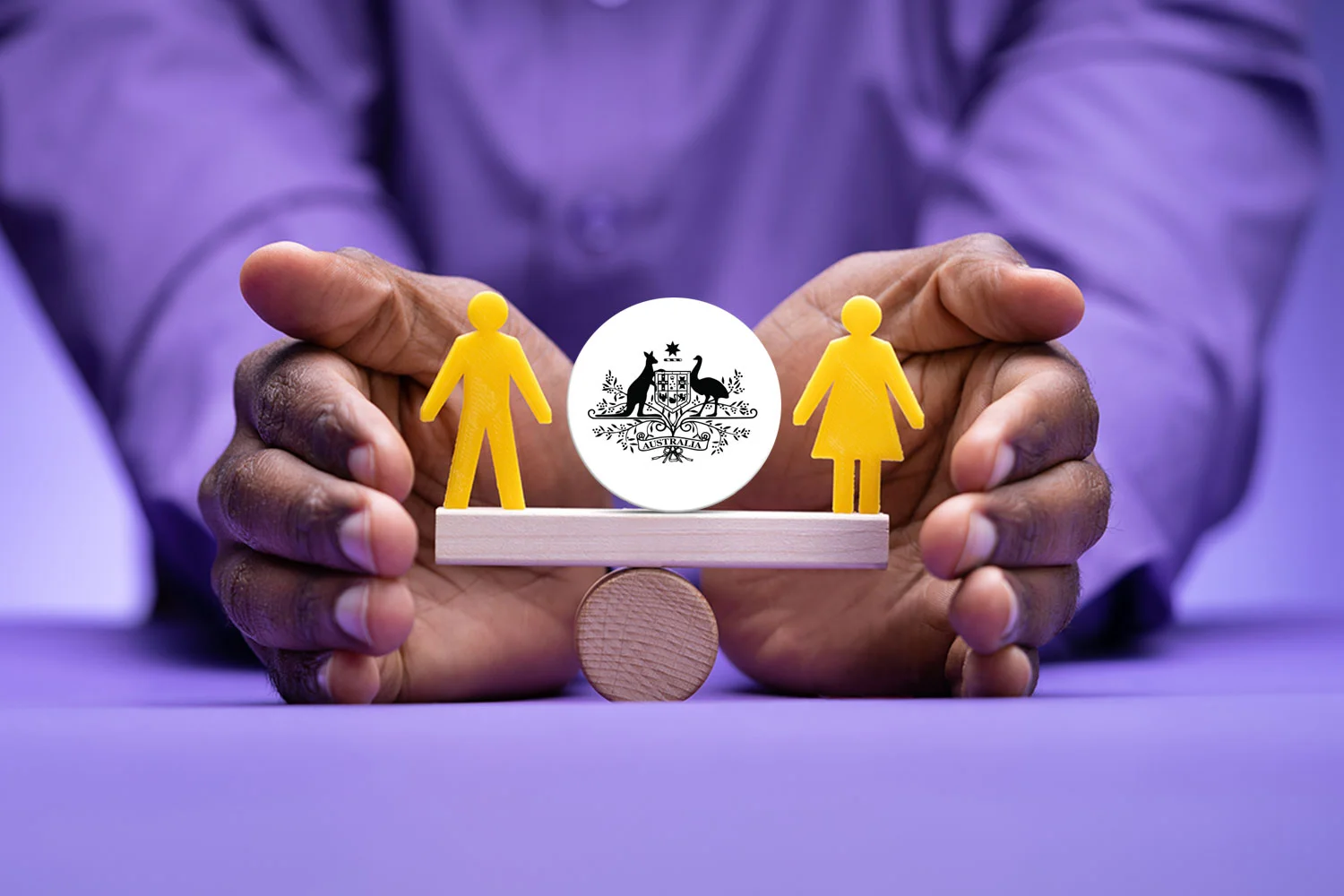
Introduction
Ladies and Gentlemen– Wait! But what if you don’t fit in either the ‘ladies’ or ‘gentlemen’ categories? From cartoons to theatre performances, “ladies and gentlemen” is the familiar salutation we are all used to hearing growing up. But did you know that even phrases like that can shape the way we think?
Language is a powerful tool that influences our perceptions and behaviours. Even simple phrases like “Ladies and Gentlemen” can reinforce binary gender norms, it suggests that you must be one or the other to be included in the conversation. That’s why Diversity Atlas acknowledges language as a key diversity pillar. Never did I realise that what we say daily can create stereotypes and limit our understanding of gender diversity. But when we move towards gender-inclusive language, we can begin to challenge these outdated norms and create a more inclusive society.
Now, in today’s digital age, the language we use online plays a crucial role in influencing our cultural and social attitudes. This brings us to the Victorian Government’s commitment to gender-inclusive language, it presents as a fascinating case study in how words can promote equality and eliminate gender bias. Let’s explore how the Victorian Government has promoted gender equality and committed to gender-inclusive language throughout history.
Evolution of Gender-Neutral Language on the Victorian Government Website
Why is this important? The Victorian Government’s website is where people go to find all sorts of information, from health tips and community services to academic research. With over 300,000 employees, the way the public sector uses language can shape the culture of the workforce and influence the broader community.
Websites are now the main gatekeepers of information, and they have the power to either reinforce or challenge stereotypes. By using gender and age-inclusive language, organisations can make everyone feel welcome. This isn’t just about doing the right thing; it’s also about connecting with a diverse audience. For example, nonprofits like Cultural Infusion can get their messages across more effectively by making sure their content speaks to everyone.
The words people see on Victorian Government websites can subtly shape their views. Since people use these sites frequently and for many purposes, the language they encounter can have a big impact on how they understand and accept gender diversity.
Our analysis of the Victorian Government website from 1970 to 2023 reveals an inspiring journey towards gender-neutral language. Over the years, the website has evolved to become more inclusive, mirroring a broader societal shift towards gender equality. In the early days, the content was filled with heavily gendered terms and phrases that reinforced traditional roles. But recent updates have transformed the language to be more neutral and inclusive, embracing the diversity of gender identities and expressions. This progress not only reflects changing attitudes but also sets a powerful example of how words can drive social change.
Inclusive language on websites can significantly boost user engagement and overall success. When users feel represented and respected, they are more likely to engage with the content and return to the site! This sense of belonging fosters loyalty and trust, which are crucial for any organisation’s success. For non-profits and informational platforms, inclusive language allows them to reach a broader audience and maximise their societal impact. This inclusivity is not just about ticking boxes; it’s about creating an environment where all users feel seen and valued.
Measuring Inclusivity with Technology
Python and Machine Learning are effective tools for detecting gender biases in text. Unfortunately, I’m not a woman in STEM, but let me break all these tech jargons in terms that I can understand for you. Organisations can proactively monitor and rectify biases by training algorithms to identify gendered words. For example, words like “strength” and “competition” are often associated with masculinity, while “love” and “empathy” are seen as feminine. Detecting an abundance of such words can highlight potential biases in content. Natural Language Processing (NLP) techniques can analyse large datasets, identifying patterns and trends in language use. This technological approach ensures that content creators are aware of unconscious biases and can take steps to address them. With this in mind, Diversity Atlas embarked on a study to analyse Victorian Government websites’ language use.
Key Findings from the Study
We selected four main departments to analyse:
- Communities
- Public Sector
- Health & Social Support
- Victorian Health
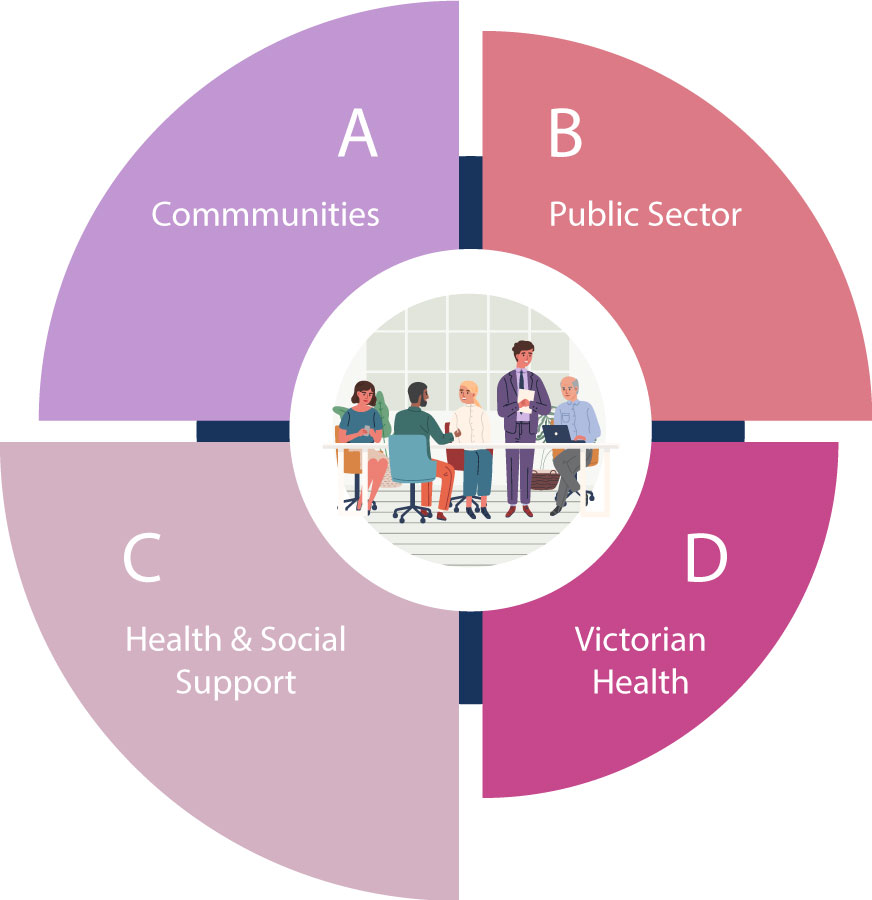
Our analysis of Victorian Government departments revealed interesting trends. Check out this pie chart overview of each departments’ language use:
Use of Language by Department
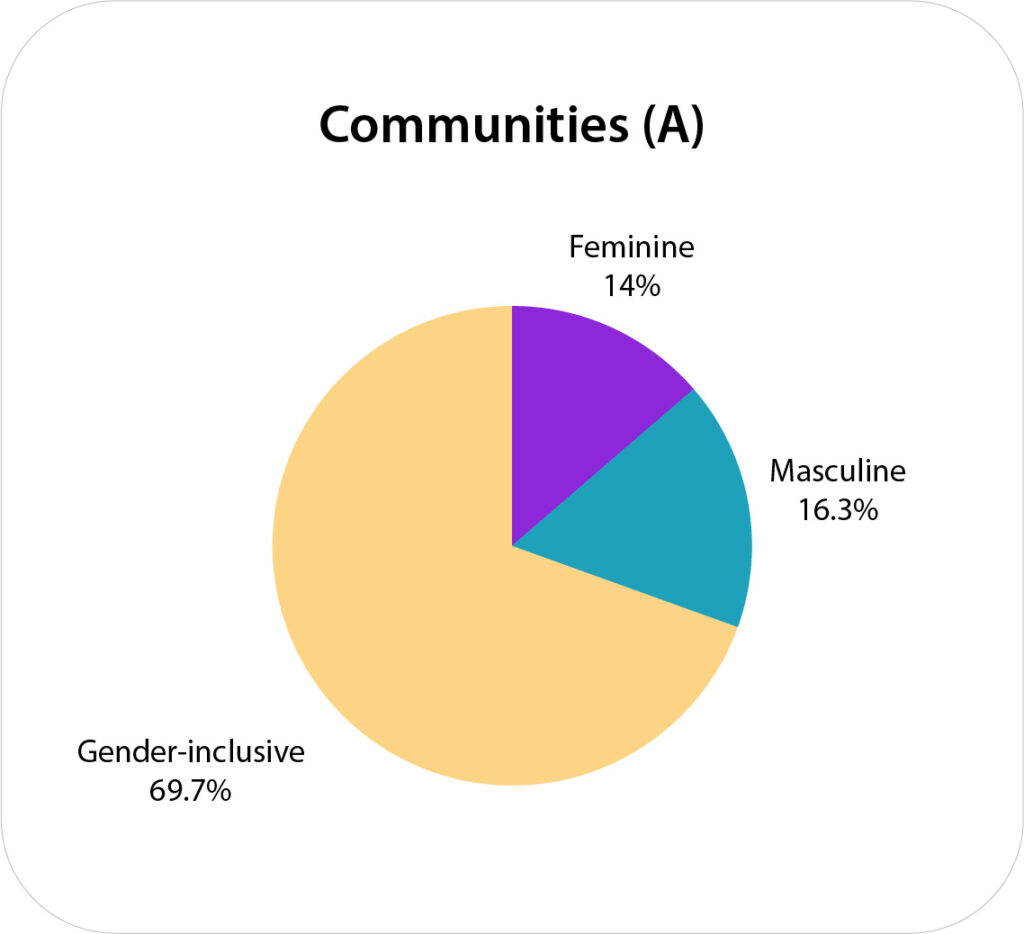
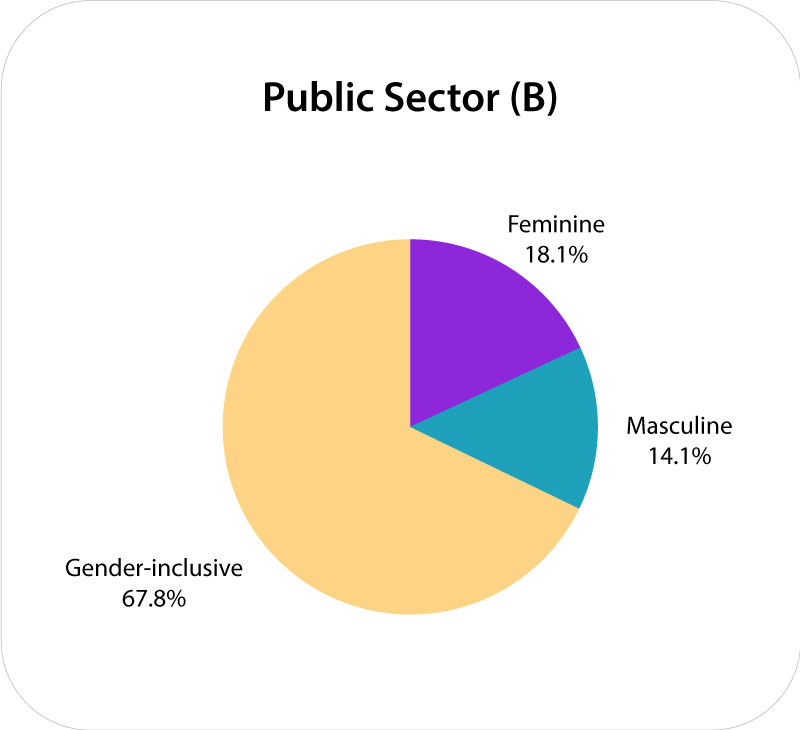
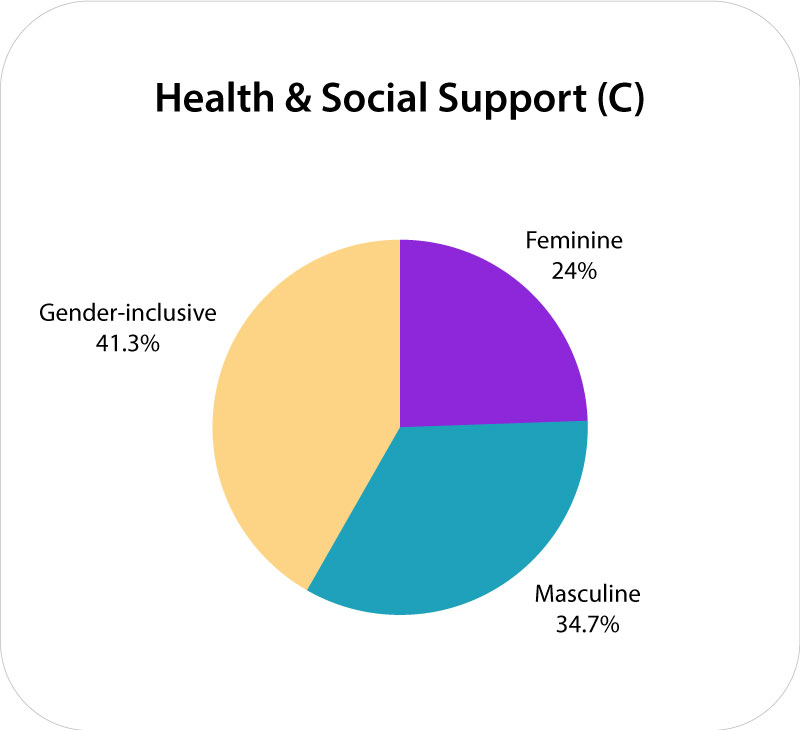
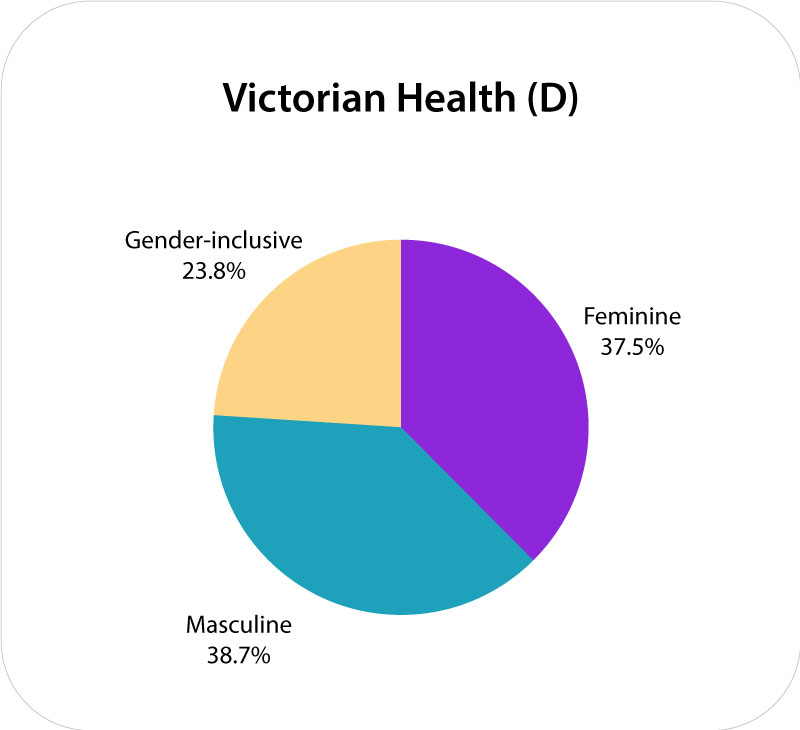
Out of all the departments, the Health Department (D) had more masculine words, reflecting traditional associations with physical activities and sports. Let’s look at their use of feminine, masculine, and gender-inclusive language at a glance:



This department is particularly interesting because it’s been around for the longest out of the 4 departments! Its’ long history shows how entrenched societal norms can influence language use.
Our other key findings show:
- Communities Department (A), unlike Victorian Health (D), demonstrated a strong commitment to gender inclusivity, with a balanced use of gendered words.
- The Public Sector Department (B) had the highest number of gender-inclusive websites, indicating significant efforts to promote diversity.
Challenges and Opportunities in Leveraging Machine Learning for Inclusivity
Even though technology is beneficial for detecting and eliminating gender bias, gender analysis can be tricky because it’s subjective and deeply tied to sociocultural contexts. Plus, without standardised methods, it’s hard to difficult findings from different studies. Take the word ‘flexible’—it might be seen as feminine, but ‘flexible hours’ is gender-neutral when it comes to work schedules. That’s why manual checking and expert input is so important to get it right.
However, advanced tools like Python offer promising solutions for these challenges. By integrating machine learning and NLP into the content creation process, organisations can ensure a more inclusive digital environment.
Here are my biggest takeaways for you: Gender-inclusive language matters!
Because of how widely used and accessed by the public, the language used on Victorian Government websites matters! It has the power to promote equality and challenge stereotypes. By integrating machine learning and inclusive practices into website design, organisations can create more welcoming digital spaces for all users. This commitment to inclusivity not only benefits individuals but also enhances organisational success. Let’s create a digital environment where everyone feels valued and respected! Please visit Research Papers | Diversity Atlas for more research papers of ours to learn more about how advanced technology intersects with Diversity, Equity, and Inclusion (DEI).
Leverage our research and materials
Our peer-reviewed research papers are public domain, but all materials and collateral in this section are © Diversity Atlas, 20XX, and are subject to our Terms of Use and Privacy Statement.
Usage of the research is restricted to members of the Diversity Atlas Research Global Community. Non-members should contact us at [email protected] for permission or consider membership. Organizational membership is required for organizational use.
When referencing our research publicly or utilising our materials, proper attribution to Diversity Atlas is mandatory. Formal attribution is required for written references, while verbal references should cite “Diversity Atlas by Cultural Infusion”.
Share this Post